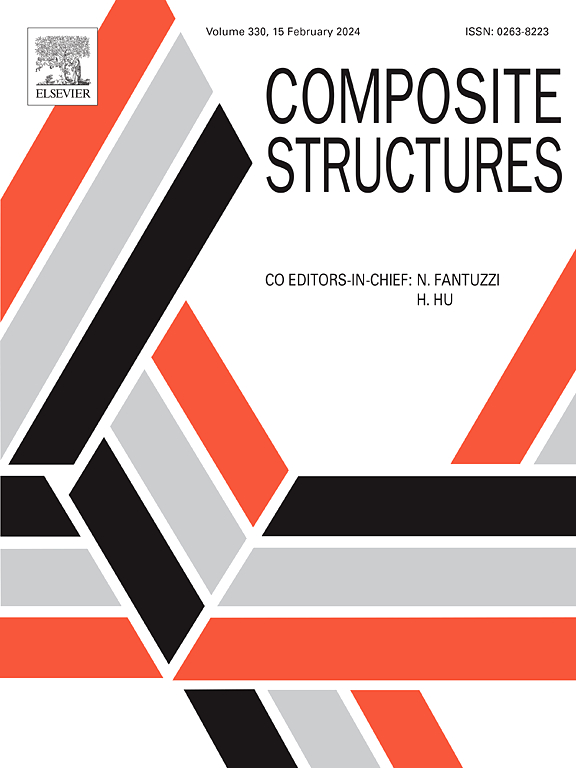Design, experiment, and finite element analysis of bio-inspired novel 3D woven tubular composites
IF 6.3
2区 材料科学
Q1 MATERIALS SCIENCE, COMPOSITES
引用次数: 0
Abstract
3D textile-structured tubular composites currently suffer from problems with single cross-sectional shapes and low energy absorption efficiency. To address the above problems, this study proposes a novel tubular structure inspired by the bamboo structure, characterized by a concentric nested structure of “double tubes & double ribs.” Bio-inspired novel 3D woven tubular composites (3D-WBBTC) with the above structures were prepared using the VARTM process, aiming to enhance the energy absorption of 3D woven tubular composites. The axial compression performance and energy absorption performance of 3D-WBBTC were studied using quasi-static axial compression tests and finite element numerical simulations. The results show that the specific energy absorption ranges from 7.41 to 11.59 J·g−1 and compression force efficiency ranges between 0.50 and 0.75, significantly improved compared to traditional 3D woven tubular composites. The damage mode of 3D-WBBTC is a hybrid damage mode of “local buckling of the tube wall & partial folding of the ribs,” which includes debonding of the fiber-resin interface, different forms of fiber breakage, and peeling, shedding, and cracking of the resin. It provides a new approach to the innovative design of 3D woven tubular composites.
求助全文
约1分钟内获得全文
求助全文
来源期刊

Composite Structures
工程技术-材料科学:复合
CiteScore
12.00
自引率
12.70%
发文量
1246
审稿时长
78 days
期刊介绍:
The past few decades have seen outstanding advances in the use of composite materials in structural applications. There can be little doubt that, within engineering circles, composites have revolutionised traditional design concepts and made possible an unparalleled range of new and exciting possibilities as viable materials for construction. Composite Structures, an International Journal, disseminates knowledge between users, manufacturers, designers and researchers involved in structures or structural components manufactured using composite materials.
The journal publishes papers which contribute to knowledge in the use of composite materials in engineering structures. Papers deal with design, research and development studies, experimental investigations, theoretical analysis and fabrication techniques relevant to the application of composites in load-bearing components for assemblies, ranging from individual components such as plates and shells to complete composite structures.
 求助内容:
求助内容: 应助结果提醒方式:
应助结果提醒方式:


